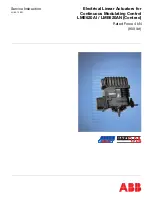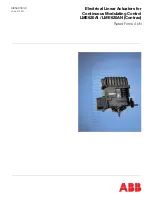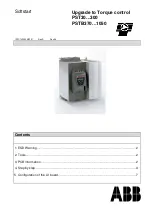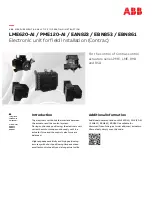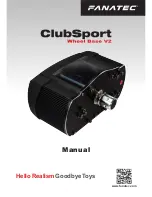
34
FORM 160.54-M1
ISSUE DATE: 10/25/2019
SECTION 3 - MICROBOARD 031-01730-000
JCI COMPANY CONFIDENTIAL
JOHNSON CONTROLS
Program Jumpers/Program Switches
The Program Jumpers and Program Switches are
used to alter the program operation or configure the
microboard hardware for specific operation. This al-
lows the Program and Microboard to be universal
for all standard applications. See
CROBOARD 031-02430-000 AND 031-02430-001
for
the function of each jumper and switch. The position of
some jumpers can be determined by the Service techni-
cian to meet the desired operation. Others must be po-
sitioned according to the requirements of the size, type
or style of components and thus are determined by the
YORK factory. Some jumpers are plastic sleeves with
metal inserts that are inserted over 2-prong or 3-prong
conductors. Others are wire bridges that are either cut
or left in place. The program switches are miniature
switches that are placed in the ON or OFF position.
Keypad Interface
The keypad is read via J18. The keypad is a matrix of
conductors arranged in rows and columns (See
50 on page 124 and Figure 51 on page 125
). There
are 4 rows and 8 columns. When a key is pressed, the
conductors are pressed together at that point, creating
continuity between the row conductor and the column
conductor. The keypad is read by applying a logic low
to a row while l5 VDC pull-up on all other
rows. The microprocessor then reads the 8 columns.
If any column has a logic low on it, the key corre-
sponding to that coordinate (row, column) is being
pressed. The microprocessor reads the entire keypad
by repeating this routine beginning with row 1 and
ending with row 4. The entire keypad is continually
read while the Control Center is powered. See
of this manual for details of the
keypad.
CM-2 Board or Style A Solid State Starter
Interface
The microboard retrieves certain operating parame-
ters (via J10) from the compressor motor starter con-
trol board (CM-2 Current Board for Electromechani-
cal starter or Style A Solid State Starter Logic Board).
See the appropriate section of this manual for detailed
explanation of each board.
Both boards contain an 8 channel multiplexer. The
microprocessor sequentially and continually reads
channels 0 through 7. It reads each channel by ap-
plying a 3-bit binary address to the multiplexer. A 0
to 5 VDC analog value is returned from each chan-
nel. The function of each is in the
. The microprocessor determines which board,
and therefore which starter is present, by the value
returned from channel 0. Since channels 0 through 6
are grounded, the CM-2 board returns a 0 VDC value.
The Solid State Starter Logic Board returns a value
more than 0.41 VDC to +5 VDC. If the value is less
than 0.4 VDC, it indicates the starter is an Electro-
mechanical (EM) starter and the microprocessor then
reads channel 7 to retrieve the peak motor current val-
ue. A value more than 0.4 VDC indicates the starter is
an A style Solid State Starter and the microprocessor
reads channels 1 through 7.
In the solid state starter, channel 0 indicates the starter
size (model) and voltmeter range (300 VAC or 600
VAC). Channel 1 is a hardware generated 100% FLA
(prevents pre-rotation vanes from further opening) or
104% FLA (closes pre-rotation vanes until motor cur-
rent is less than 102%) current limit override com-
mand that overrides normal pro-rotation vanes con-
trol. Channels 2 through 4 are analog voltages that
represent phase A, B and C motor current. The high-
est phase Channels 5 through 7 are analog voltages
that represent Phase A, B and C line voltage. The ad-
dresses and associated data are shown in the following
table.
TABLE 3 -
ADDRESSES AND ASSOCIATED DATA
CM-2 Board
MOD A SOLID STATE
STARTER LOGIC Board
ADDRESS
DATA
ADDRESS
DATA
0–6
Grid
0
starter model /
voltmeter range
1
currrent limit
command
7
Peak Motor
Current
2–4
phase C, B, A
motor current
5–7
phase A, B, C
line voltage































